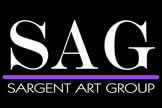How to use your smartphone to photograph artwork for show entries
Article by Bob Boyd presented to group at October 2022 meeting
How to use your smartphone to photograph artwork for show entries
About your smartphone: Most newer smartphones have good cameras; some have great cameras. If your smartphone has 2 or more lenses, it has optical zoom. This is good but not necessary. All smartphones have digital zoom but we will avoid using that because it degrades the quality of the image. So, if your phone has optical zoom, don’t exceed its limit, and, if you don’t have optical zoom, don’t use zoom. Be sure your phone’s camera is set to “photo” and the flash is set to “off”.
Lighting: The best lighting is outdoors on an overcast day. A well-lighted indoor environment is also OK. Avoid direct sunlight or dappled shade and be sure the artwork is evenly lighted, no shadows. In addition to brightness, light has color temperature, measured in degrees kelvin. The warm incandescent light we were accustomed to, prior to LEDs was 2400 to 3000 degrees kelvin. The higher the number, the whiter (bluer) the light appears. To render the colors as accurately as possible, include a “white card” next to the artwork to allow the color to be corrected later.
The Artwork: The easiest art to photograph is untextured with a matte finish (unglazed watercolor). Thus, if you are a watercolorist, photograph your art before matting, framing and glazing. Texture (impasto) will create highlights and shadows which is Ok and textural art that has been varnished (gloss) will create brighter highlights. If your art is photography, send a reduced resolution file.
Taking the picture: Try to fill the frame with the artwork being careful to include some of the white card. The cropped image will exclude the frame and white card, but I will do that in Photoshop. Try to keep the camera parallel to the surface of the art to avoid getting a trapezoidal image. The image will always be skewed slightly, and I can correct that in Photoshop, but the best result will result from the best source image. Be sure to check that you aren’t casting a shadow on the art.
Saving and naming the image: My iPhone saves images to the iCloud and I can access them through the “Photos” tab on my phone or through the “iCloud” app on my PC. On my PC I can download them and save to a folder. Each photo will have a number and I can rename them in the folder. If you can do that, please name the photos this way: “number” “Name of artwork” “dimension w/o frame (height first x width)” “media” “artist name”. For example: “1 Psychotic Dunce 18x20 mixed media Joe Blow” If you are sending the file directly from your phone, please include the name in the text of the email.
Sizing and sending the file: File size is important. Most shows specify a certain maximum and minimum number of pixels height and width and a certain dpi. I can adjust the files to conform to that requirement but, if the file is too small to begin with, the result will be blurry. Too big (within reason) is better than too small. 2 MB is probably a good file size and 16 MB is probably the upper limit for email attachments. Please send files to me as email attachments, not embedded in an email or text message.
For shows and website send photos to: [email protected]

